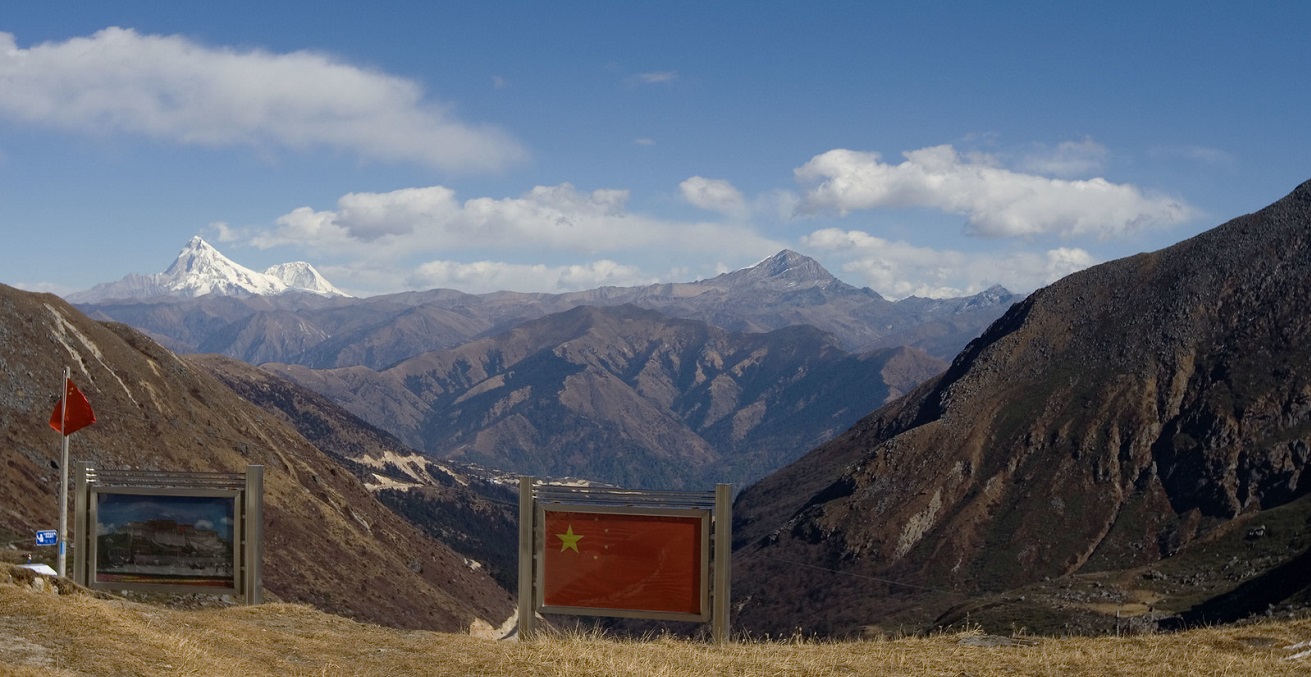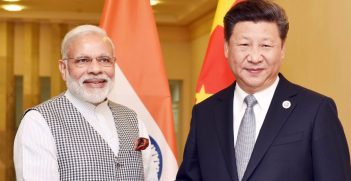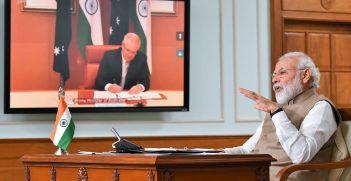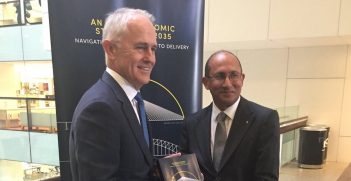India-China Standoff Ends India’s Hopes for Asian Unity

China claims territory over the Galwan Valley, which India has rebuffed as a unilateral attempt to change the status quo. Diplomatic and military efforts to defuse the standoff have not achieved any substantial results, and now the two nuclear-armed Asian giants are at risk of war.
A deadly clash in the Galwan Valley on 15 June was the unsurprising apogee of weeks of rising tension and almost six decades of dispute, spanning back to the 1962 Indo-China War. But the issue goes back even further to 1914, when China refused to accept the McMahon Line agreement between then-British India, Tibet, and China to recognise Tibet as an autonomous region. China neither accepted Tibet’s autonomy nor the McMahon Line agreement.
Post-World War II, tensions built between the two sides. Despite Indian Prime Minister Jawaharlal Nehru’s pitch for “Hindi-Chini Bhai Bhai,” or Asian Solidarity, and India’s support for China’s inclusion in the United Nations Security Council, China pursued a hostile policy towards India. The two Asian powers’ relations began to deteriorate and finally, war broke out in 1962. China prevailed and occupied 43,000 square kilometres of Indian land in Aksai Chin. More than 1000 Indian soldiers were killed and 3000 captured. Around 800 Chinese soldiers were also killed.
Five years later, in September and October 1967, a full-fledged war broke out in which India dominated and destroyed the Chinese fortification attempt. Around 340 Chinese and 150 Indian soldiers were killed. Major standoffs also occurred in 1987 and 2013 but did not culminate in war. In the Doklam standoff in 2017, India mobilised around 40,000 troops to counter Chinese aggression. The recent standoffs have been attributed to the 3488 kilometer unmarked border and differing perceptions of the Line of Actual Control (LAC). But there is more to this that needs to be seen in China’s geopolitical intent.
Casualties controversy: Xi Jinping’s domestic and international challenge
In the June 15 LAC clash, twenty Indian soldiers were killed in hand-to-hand combat after being taken off guard and outnumbered by Chinese knavery. The Chinese soldiers used nail-studded iron rods and stones. China did not report any casualties, but Indian news outlet ANI reported 43 and US intelligence reported 35. The Global Times, a Chinese state media outlet, admitted to casualties on the Chinese side, but would not reveal the number. China has confirmed just one casualty – their commanding officer. There are reports of protests from the deceased Chinese soldiers’ families to recognise their martyrdom. This is not new – General V.K. Singh, the former chief of the Indian Army, says that the Chinese always hide their casualties. Be it 1962 war, the deaths due to the famine in 1959-61, or COVID-19, the Communist regime is known for hiding casualties.
With the current pandemic, hiding military casualties is likely an attempt to shield Xi Jinping, who has been under pressure for his handling of COVID-19, negative economic growth of around nine percent, and growing unemployment. Confirmation of the death of Chinese soldiers would only add to his troubles.
The COVID-19 pandemic, which has killed more than half a million people and severely hit economies around the world, has decreased China’s international standing. China has been heavily criticised for hiding the severity of the COVID-19 outbreak, propagating disinformation, manipulating the World Health Organization, and exploiting the crisis for its geopolitical goals. This is reflected in China’s approach to medical aid, passing of the security law in Hong Kong, flaunting naval power in the South China Sea, and economic arm-twisting of Australia.
China sees an opportunity to dislodge US primacy, particularly in the Indo-Pacific. With the US is moving to balance China’s geopolitical ambition and fix global supply chains which China dominates, India has emerged as a significant player. China’s military assertion along the LAC is a message to the world and its adversary that India is not a credible alternative to China.
India’s response and strategic edge
Responding to the Galwan Valley clash, Indian Prime Minister Narendra Modi said that the Indian soldiers’ sacrifice would not be in vain. India wants peace, but if provoked, is capable of giving a befitting reply to China. These are not empty words. India may be lagging behind China in economic terms, but contrary to general perceptions, India retains a strategic edge through more secure defence.
India is ahead of China in air power with more advanced aircraft and airbases along the LAC. China’s J-10 fighter jet is technically comparable to India’s Mirage-2000. The Indian Su-30MKI is superior to all Chinese fighters, including the additional J-11 and Su-27 models. China possesses around 101 fourth-generation fighters. India has 122 in the theater. India’s aircraft are directed exclusively against China, whereas China must preserve a quotient for Russian offence.
India has fought in more wars than China over the past 45 years. China fought its last war in Vietnam in 1979, whereas India has fought and won many wars with Pakistan over the years. India is more familiar with Himalayan terrain from fighting terrorists. Over the past two decades, India’s forces have focused on tackling the dual threat from China and Pakistan and have developed force structures accordingly. To counter a potential Chinese attack, Indian force preparedness has significantly focused on infrastructure hardening, base resilience, improved air and maritime defence, and redundant command, control, and communications systems. Meanwhile, China has been preoccupied with perceived security threats from the US in the South China Sea. Only in the case of India’s complacency could China assert an edge over India.
Strategic and defence partnerships: India stacks up better than China
Besides its defence capability, India stacks up better than China when it comes to strategic friends. India is close to the US-led “Political West” and has formed a formidable strategic partnership with many China-wary countries in the Indo-Pacific. Today, most world powers converge politically and strategically with India on issues such as rules-based order and strategic stability in the Indo-Pacific. China is left with only two allies: Pakistan and North Korea.
To counter Chinese aggression, the US, Japan, India, and Australia – the “Quad” – have expanded the dialogue to include South Korea, Vietnam, and New Zealand in the “Quad-Plus.” India has been invited to the G7 meeting along with Australia, South Korea, and Russia. India’s candidature for permanent membership to the United Nations Security Council is backed by all permanent members except China. India has formidable defence agreements with highly advanced military powers including the US, France, Israel, UK, and long-standing defence partner Russia, and engages with them through defence, commerce, joint-military exercises, and intelligence sharing.
Four significant events during the LAC standoff reinforce this trend. First, US Secretary of State Mike Pompeo has clearly stated that US troops are being moved to the South China Sea in response to Chinese aggression against India and US allies in Southeast Asia. Second, Australia entered a Mutual Logistics Defence Agreement with India, signed during a virtual meeting between Modi and Australian Prime Minister Scott Morrison. Third, during the standoff, Indian Defence Minister Rajnath Singh and a 75-member military contingent attended Russia’s Victory Parade marking victory over Germany. Fourth, is open and steadfast support from France for India on India-China conflict.
India’s presence at the Russian Victory Parade occurred in the context of Russia’s speedy delivery of S-400 surface-to-air defence missiles to India. Russia and China have bonded against US unilateralism, but they have their differences on the issue of the India-China border. On this, Russia will stand with India. Despite becoming closer to the US and the West, India continues its friendship with Russia, in which defence is a major component. Russian hardware makes up over 70 percent of India’s armory.
Above all, India’s strategic partnership with the United States is unambiguous in its aim to balance China’s power. The US is India’s top defence supplier. India conducts more military exercises with the US than any other country. Amidst the COVID-19 crisis, US-China geopolitical tension has deepened the bond between India and the US.
India’s Delusion with China Exposed: What Next?
China is exposed for both its aggressive military expansionist agenda and predatory trade policy. In India, there is growing protest against China and demand to curb Chinese investment. The balance of trade between China and India sits at a deficit of around $55 billion in favour of China. The Indian government is considering banning some Chinese products and restricting Chinese investment. Though India has yet to enact these policies, a number of central and state government entities have put big Chinese projects on hold and refrained from entering new contracts with Chinese firms. India has banned 59 Chinese apps and Chinese investment in highway projects. These changes will hit China most harshly, as admitted by a Chinese state media editorial.
India’s defence minister has directed Indian forces to deal with China forcefully. This will end the 1996 Confidence Building Measures which prohibited firearms on the Indo-Chinese border. India has alerted its forces, enhanced its strategic presence, and moved its missile defence system to meet an attack by China. Such military build-up continues despite ongoing de-escalation talks between the two sides. Notwithstanding the nuclear deterrence, the two Asian giants remain vulnerable to war.
China’s actions during this pandemic have exposed China’s claims to a peaceful rise and benign power to criticism. The Galwan Valley conflict has jolted India’s delusion of togetherness in the so-called “Asian Century,” a Nehruvian legacy that carries in the 21st century as well. With no option but to respond to China’s aggression, this is India’s moment to seize the opportunity to galvanise the national mood. By making a transformational leap in its economic development, India can provide an open, trusted, and transparent alternative to China in the global supply chain. The Galwan Valley conflict will disadvantage China and will only accelerate India’s rise.
Dr. Ashok Sharma is a Visiting Fellow at the University of New South Wales Canberra at the Australian Defence Force Academy and an Adjunct Associate Professor at the University of Canberra. He is also the Deputy Chair of the New Zealand Institute of International Affairs, Auckland Branch. His latest book is India’s Pursuit of Energy Security: Domestic Measures, Foreign Policy and Geopolitics.
This article is published under a Creative Commons Licence and may be republished with attribution.





